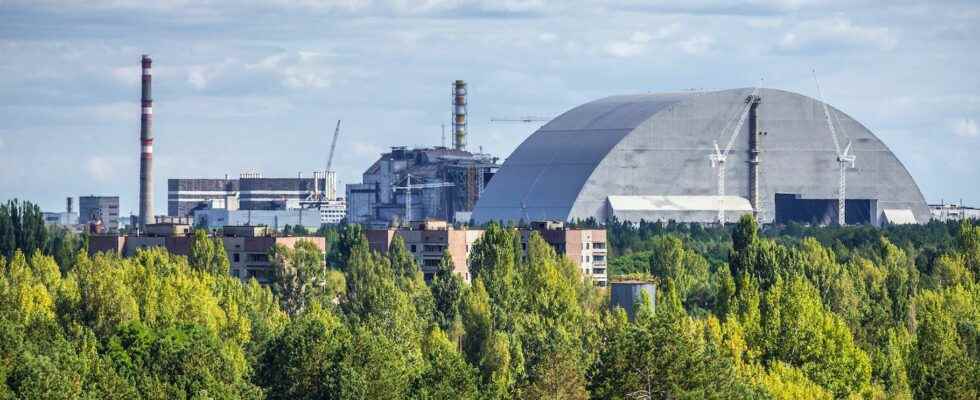You will also be interested
[EN VIDÉO] Return to Chernobyl 30 years after the disaster In 1986, the Chernobyl reactor in Ukraine, then in the USSR, suffered an unprecedented accident. During an exercise, the power of reactor no. 4 increased until it caused an explosion. The Discovery Science channel returns to this tragedy in a documentary broadcast this Tuesday, April 26, 2016, at 7:50 p.m., and of which here is an excerpt.
After the runaway of reactor number 4 of the Chernobyl power plant on April 26, 1986, there followed a dissemination of the radioactivity throughout Europe, even in Francebut especially in what is called the exclusion zone, a perimeter of 30 kilometers around the plant. Different types of radiation were emitted and then absorbed by the environment, creating many changes that scientists have since tried to understand.
For this, not only one but several different methods are used, all of which are based on the same principle: the collection and analysis of field data. Population counting, footprints in the snow to deduce the number of individuals, reconstruction of absorbed doses: every detail counts. Combined with knowledge of radiobiologyfield observation allows researchers to recreate the evolution of populations at Chernobyl, whether in number or even in characteristics, and to deduce the real consequences of this accident on the biodiversity.
Fauna and flora have adapted to radioactivity
Because radioactivity induces changes genetic different depending on the individual. The term “radioactivity” can also designate different types of elements: atoms in a so-called unstable statewhich will gradually decrease according to their duration of life, or gamma radiation which come from nuclear reactions. Other radiations are emitted during such reactions, but they can only cross short distances, less than one centimeter, such as alpha and beta particles. But, how are these radiations then scattered then absorbed? In a report, IRSN outlines the contamination the environment: through water, through plants, through animals, radiation sneaks in everywhere and then remains stored mainly in the ground, hence the concern following Russian occupation on the site.
In plants, if at the time of the accident the radioactive elements are mainly absorbed by the leaves, once this first phase has passed, everything is transmitted by the roots: no more radioactivity in theair, so all contamination is internal. The radioactivity then decreases little by little, at the rate of growth of the plants and according to the progressive disintegrations of each element: for exampleiodine 131 disappears quickly while the cesium 137 rest.
Researchers have focused in particular on the Japanese pines present on the Fukushima sitea species very radiosensitive also present near the Chernobyl plant. On this last site, they noted in particular a death of 90% of trees within a radius of ten kilometers around the reactors, creating the “red forest”, gradually replaced by other species such as birches or other shrubs. As for the remaining pines, whether in Fukushima or Chernobyl, the observation was the same: they have undergone genetic modifications. Their morphology has changed from a main axis, the trunk, with branches extending from either side, to an appearance more like that of a bush. More precisely, they found the “disappearance of the top bud in favor of the lateral buds”explains the IRSN in a report.
The entire food chain has been impacted
But the plants were of course not the only ones impacted. If today many animals again populate the exclusion zone, just after the accident this was not the case: according to a study, a 60% reduction in the number of large mammals was observed for a 10-fold increase in dose, in the most contaminated environments. Today, they have returned and come from previous generations impacted by the accident. Studies agree on this: in these species, there is greater genetic diversity than normal among individuals, due to the multiple genetic mutations caused by radioactivity ambient.
In multiple species of birds, researchers have found a decrease in population as a function of radiation exposure through a decline in fertility, a well-known consequence of radiation on living things. They measured a rate of fertility only 25% in the contaminated zone, leading to a rapid decrease in the number of birds. In swallows specifically, a high rate ofanomalies morphological, such as malformations of the beakfrom tumorsof the’albinism partial, was observed. Finally, for all bird species, a decrease in the size of the brain was observed, by 5% on average compared to control zones devoid of radioactivity.
Few studies manage to conclude on the entire ecosystem
But if these studies were carried out on fauna and flora, a ecosystem is much more than that: it does not take into account the interactions between each species of the place. For example, a decrease in the abundance of birds and pollinating insects has been observed in the most contaminated areas. Or more exactly, calculated from a real observation on the ground: the reduction in the quantity of fruit trees. As these trees depend on insects for pollen dispersal, and birds for seed dispersal, their evolution and that of these two species are closely linked. This is what researchers call indirect effects.
Today, more than thirty-five years after the accident, most of the species are back, but radioactivity remains through elements that slowly disintegrate and are stored in the ground. the cesium 137, for example, has a period of half-life about 30 years, has declined by just over 50%. The site remains visitable and much less dangerous, but caution is required.
Interested in what you just read?
